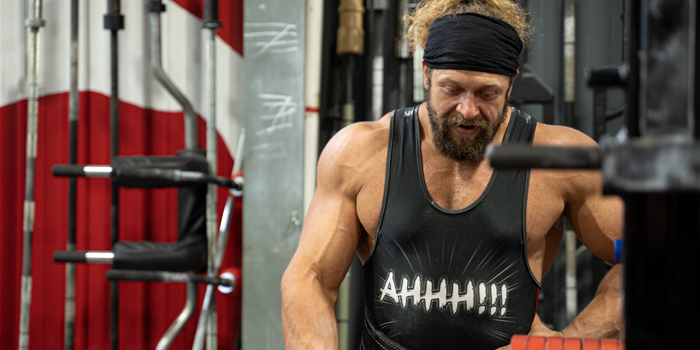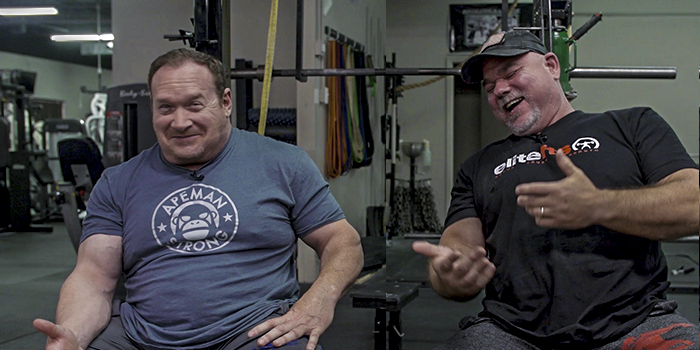
There is a large group of people, about 35 million to be exact, known as the Yoruba. Yoruba are an ethnic group from western Africa, specifically from Nigeria, Togo, and Benin. The history of the Yoruba is ancient history (pre 7th century BC), and their culture is one of introspective depth, steeped in meaningful and thoughtful philosophical beliefs.
The Yoruba Proverb
The Yoruba proverb, "Where You Sit When You Are Old Shows Where You Stood In Youth," refers to is the decisions that one makes in their youth have a direct and binding impact on one’s own future. For example, good, sound, well-thought-out decisions can have a future impact that yields spectacular rewards. Contrarily, poor, unsound, and not well-thought-out, or worse, short-sighted or reckless decisions, can have tragic effects on one’s future self.
As powerlifters, bodybuilders, strongmen/women, as individuals who pursue strength, power, muscle, and size, this proverb absolutely applies to the vast majority of endeavors in our own future. Our future that exists for all after youth fades and when one inevitably grows older depends on our own personal agency, conscience, and direct actions in our lifting youth.
NEW: Powerlifting Basics: Go Easy on the Croutons
One's decisions and choices in youth can lead them toward, or away, from where they want to sit when they are older. Said another way, one’s physical body of work and the potential for sustained accomplishments when older rests squarely on the shoulders of our own selves in our youth, not on someone else's, not on some coach’s, not some training partner’s, not on any other human’s shoulders, but squarely and firmly on our own.
Young Lifters
In a sense, as young lifters, we are our own future, brother’s keeper. There are very few things that are certain, very few that are givens, but time passing is one of life’s certainties. Knowing this, we can use this Yoruba proverb to our advantage for our here and now selves, as well as future selves. That said, one can also ignore these certainties, and instead of suffering the worthy path of the pain of discipline, they choose, by default, a far worse pain, the pain of regret.
The trick bag to this mindset laid out by the Yoruba is that the decisions of where one sits as a master lifter lay in the hands of their younger selves. Their younger selves are still very inexperienced, still very naive, seemingly bulletproof, seemly invincible, and impervious to injury or mishap. When one’s younger-selves inexperienced aspirations to achieve are purposely sped up, purposely accelerated by throwing caution to the wind, one’s older-selves in the future will suffer by their own hands. The hands of the inexperienced younger-selves incorrect perceptions that injury or mishaps only happen to other lifters.
What the Yoruba proverb means (when applied to strength, power, muscle, and size) is simply this: how one trains, what one eats, how one treats or how one mistreats their body in youth, how one plans or how one did not plan one’s training in their youth, either leaves their older-selves with options or painted into a corner.
The Future of Young Lifters
Although the statement, “Youth is wasted on the young,” has merit in many instances, what this proverb does is take that universal truth a step further. Further, as this proverb is not merely a statement or warning, it is of equal importance, a gift—a gift of possibilities more so than merely warning of a fait accompli. A gift from the Yoruba to heed, as knowing and living this means avoiding pitfalls.
A gift to heed toward a future of becoming an even better, bigger, more powerful, and strong(er) version of oneself. A future that, when juxtaposed against the hastier version a future self, one of rushed and reckless shortcuts, rises above, as slow and steady and smart training always prevails over the short-sighted exuberance of one’s youthful self. It prevails as that youthful self operates devoid of experience, sophistication, and hindsight of one’s future, experienced and educated self. Intensity is an attribute for sure, but it is not a strategy, as a strategy must be sustainable. A strategy, a plan, a sustainable vision incorporating appropriately applied intensity is one’s master key to unlocking many more doors of future opportunities.
What this proverb does not mean is hold back, what this proverb does not mean is keep too much in the tank, what this proverb does not mean is never push to the brink just shy of the red line, what this proverb does not mean is never explore calculated and well thought out risks. Those who misunderstand that as their message are missing the nuance of life and a life of training. That some aspects of life, as well as one’s life in the gym, require a volume knob and not a toggle switch. Strength, power, and muscle are not an all or none proposition. The sooner that is understood, the sooner one will begin to understand the layers of lifting strata. The true lifting strata collectively adds up to help best complete the future of our strongest, biggest, and most powerful selves.
Although often viewed this way by newer lifters and our younger selves, the world of weights, when it comes to training, is not a world of black and white or on and off. Rather, the world of weights is one of subtle shades of grey that ebb and flow, that crescendo and decrescendo as one’s training is constantly in a state of evolution, evaluation, adaptation, modification, transformation, progress, and development.
A Lifter's Journey
A lifter’s journey is constantly evolving as lifters of weight are not simple machines on an assembly line. Instead, they're individuals who have a complexity to them that requires their lifting engine to operate at various speeds and various RPMs over the course of not only their current training cycle but over the course of their lifting and competitive careers. One’s older self understands that there are many, many gears available for advancement in strength, power, and muscle that exist between drive and park.
When applied to training, the Yoruba offers this: That one’s younger self literally sets the stage for their older self and thus must develop and then utilize the mental capacity to ponder deeply into their own unknown future. To peer into that possible future and realize that a lifetime of smart, wise, intense, consistent, intentional, and disciplined training does not merely meet their short-term goals but also meets long-term and perhaps even the loftiest of aspirational lifting and competing goals. That in one’s youth, going about one’s training based on a strong foundation of lifting education and not simply guessing or not simply taking wreckless stabs at training, means that you as a lifter of weights and steel and iron can continue unfettered by (serious) injury toward lifelong and career goals.
Lifelong and career lifting or competing goals are achieved by consistency, intensity, drive, work ethic, sound technique, effective methodology, utilitarian nutrition, sleep, and hydration of one’s younger self.
The Tortoise and the Hare
The Yoruba proverb is akin to the story of the tortoise and the hare. The young kid puts a little bit of money into an empty jar, then a meager 401K when he starts his first job. As his salary grows, he puts the same or an increased percent in that 401K, which grows over time. In fact, it does not just grow, but with compound interest, the growth is just that, compounded. That young kid still enjoys his life. He goes out on the weekend with his friends, but they hang out together and do things that come with no financial cost. They meet at the gym (the best bang for the buck ever) and train. They sit around on weekends playing some video games at a buddy's house. They take a drive to the beach and spend an evening talking and sharing food they all contributed.
This slow and steady investment where that person stood in their youth now allows for their future self to sit in a chair of comfort and luxury. A chair where there is a sundry of options in life vs. the continued hustle and work—no early retirement of their peers who in their youth, stood by living for today and not investing for their tomorrow. Where they stood in their youth dictated where they now sit in their old age.
Over some three decades in this great sport of powerlifting and four decades with regard to all things weights, is lifting landscape strewn with the lifting careers of those who fell prey to cheap marketing slogans like “No pain, no gain.” Strewn with those potentially great lifters who cut their competitive days short by years or decades by speeding down the road of hype instead of driving the more difficult path of slow and steady, of consistency, of learning and knowing and sticking to the basics. The more difficult but unerring paths followed by career powerlifters like the great Ed Coan, who put up monstrous numbers for literally decades, or like bodybuilders like Robby Robinson, who now in his 70s has a physique that any 20-year-old aspiring bodybuilders strive for.

Powerlifting Greats
To that end, many strongmen are still competitive at the highest level, like Mark Felix, who is 55 years old. Mark has qualified for the World’s Strongest Man contest in 2021 at 55 years of age. What's more impressive is that he also has qualified for this most prestigious event in this incredibly competitive and injury-laden sport every single year from 2007 to 2021. So Mark Felix has not just worked his way up the strongman ladder but has reached the WSM qualifier level and has sustained that level for nearly a decade and a half. The Ed Coan's, Robby Robinson’s, Mark Felix’s, and Dexter Jackson’s all sit today in greatness due to where they stood in their youth.
Vince Gironda famously stated, “Don't hit yourself on the head with a hammer because it feels so good when you stop." The Yoruba provide food for thought of passing on the whims of “No Pain, No Gain,” and rather living the journey of being ALL in—into nutrition, technique, hydration, recuperative sleep, adequate supplementation, tried and true programs, and training templates.
For us lifters, the easy part is going full blast in the gym with the loaded bar on one’s back. All lifters love that part of training. The hard part is the disciplined aspect of power and strength and size, and that is not just becoming as strong and powerful as one can be, but becoming as strong and powerful as one can be for a duration. Ed Coan competed in the 165, 181, 198, 220, 242, and 275-pound weight classes. He built himself into each class and would routinely out total his nearest competitor by 300-500 pounds.
Ed embodies the Yoruba proverb as his first of six IPF World titles beginning in 1984. His first USPF National win was in 1988, and his last USPF meet was in 2007. Think about it, just shy of two decades later, he squatted 931 pounds (walked it out, benched 518pounds, and pulled 810 pounds. Where Ed Coan stood in his youth is where Ed Coan, now the greatest of all times, sits as a master-aged lifter.
Wishing you the best in your training, meet prep, and lifting journey. Ever Onward.
Eric Maroscher is the owner of the Monster Garage Gym. Cofounded by Phil Daniels, NFL Defensive End, Monster Garage Gym is a premier powerlifting gym in the United States. Eric is the leader of the Maroscher Powerlifting Team, a two-time WPC World Powerlifting Champion, two-time APF National Powerlifting Champion, WPC North American Powerlifting Champion, and a multi-time APF Illinois State Champion.










